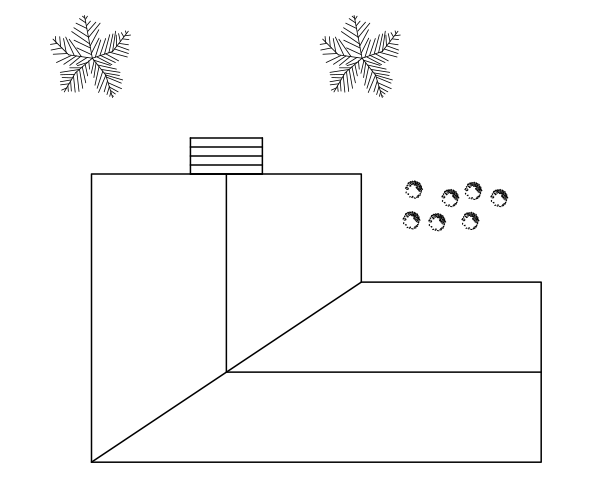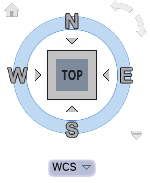Autocad 2017 Stack Layers to Draw Order
Learn the basics of AutoCAD navigation to make your workflow easier.

Mouse Wheel
Zooming and panning in AutoCAD can be done entirely with the mouse wheel. Point the cursor to where you would like to zoom and turn the mouse wheel to zoom in and out. You can also pan by clicking and dragging with the mouse wheel, using it as you would a mouse button. When you press down and click with the mouse wheel, the cursor will turn into a hand icon and the Pan command will temporarily be activated. As long as the scroll wheel is pressed down, you can drag the mouse to change your view position without zooming or moving any objects. If you double–click with the mouse wheel, you will activate the Zoom Extents command. This will zoom out or in to fit all of the objects in your drawing to the edges of the screen so you can see the entire drawing. If you click and drag with the mouse wheel, you will shift to a 3D orbit view, which is not recommended in 2D drawing. You can zoom or pan with the mouse wheel without interrupting whatever command you may be using at the time you zoom or pan. Because the mouse wheel is so versatile, many users use it exclusively for zooming and panning. It's highly recommended that you always use a mouse when drawing with AutoCAD, even if you are on a laptop with a trackpad.
Navigation Bar
You can access additional navigation tools with the Navigation Bar. Most of the Navigation Bar commands are for use in 3D modeling, but if you are not using a mouse it offers easy access to the Pan tool or the Zoom Extents tool. If you click the arrow beneath the Zoom Extents icon, you will open a dropdown menu that can access all the options of the Zoom command. Like the mouse wheel, when you can use the commands on the Navigation Bar without interrupting other commands, but you may have to press Enter or Escape to exit the commands. You can also deactivate the Navigation Bar to save screen space and prevent accidentally starting commands by clicking on the small x on the top-right corner of the Navigation Bar, or pressing the Navigation Bar button on the Viewport Tools panel in the View tab of the Ribbon, which can also be used to restore the Navigation Bar.

View Cube
The View Cube located in the upper-right corner of the screen is designed for use in 3D modeling. In 2D drawing, you should remain in a top-down parallel view. If you accidentally shift from that view position, you can click on the Top view of the View Cube icon to get back to the top down view. You may need to click on the curved arrows on the top-right corner of the View Cube to reorient the XY axis position. You can also reset the UCS origin to its default position by clicking the dropdown menu at the bottom of the View Cube and selecting WCS (World Coordinate System) You can deactivate the View Cube button on the Viewport Tools panel on the Ribbon. However, the View Cube display setting saves only with the file you are in, so if you open another file where the View Cube was visible when it was saved, the View Cube will return. For this reason, you will want to be sure to select the desired View Cube display setting when saving drawing files and drawing template files.

ZOOM Command (Z)
You can also access the Zoom command with the keyboard by entering its alias, Z. There are many options within the Zoom command, but the most common are Extents, which was explained earlier, Window, which will allow you to specify a window to zoom to by clicking with your mouse, and All, which will zoom to the drawing limits. Drawing limits is an area specified by the Limits command, which will be explained in a later chapter and is usually established in a template. If you can't zoom out far enough to see all the objects in your drawing with the mouse wheel, it's because your drawing limits are too small. You can correct this problem by using Zoom Extents to see all of your objects. Entering the Zoom command with the keyboard can be useful if you are working on a laptop without a mouse because you can simply press Z Enter E Enter for Zoom Extents or Z Enter A Enter for Zoom All.
Undoing & Redoing Zoom
Unlike other programs, Undo and Redo will affect Zooming and Panning as well as will other commands. This can potentially cause problems if you are undoing steps and zoom or pan before redoing. If you enter any command including zoom after you have undone other commands, you will not be able to redo them. Therefore, it is not recommended that you Zoom or Pan whilst using Undo and Redo.
Learn More About AutoCAD
Create professional blueprints and drawings through our hands-on AutoCAD training. Our instructors are top professionals with years of industry experience. They guide students step-by-step through projects with real-world applications. Scheduling is flexible, so sign up today!
Source: https://training-nyc.com/learn/autocad/zooming-panning-navigation-i
0 Response to "Autocad 2017 Stack Layers to Draw Order"
Post a Comment